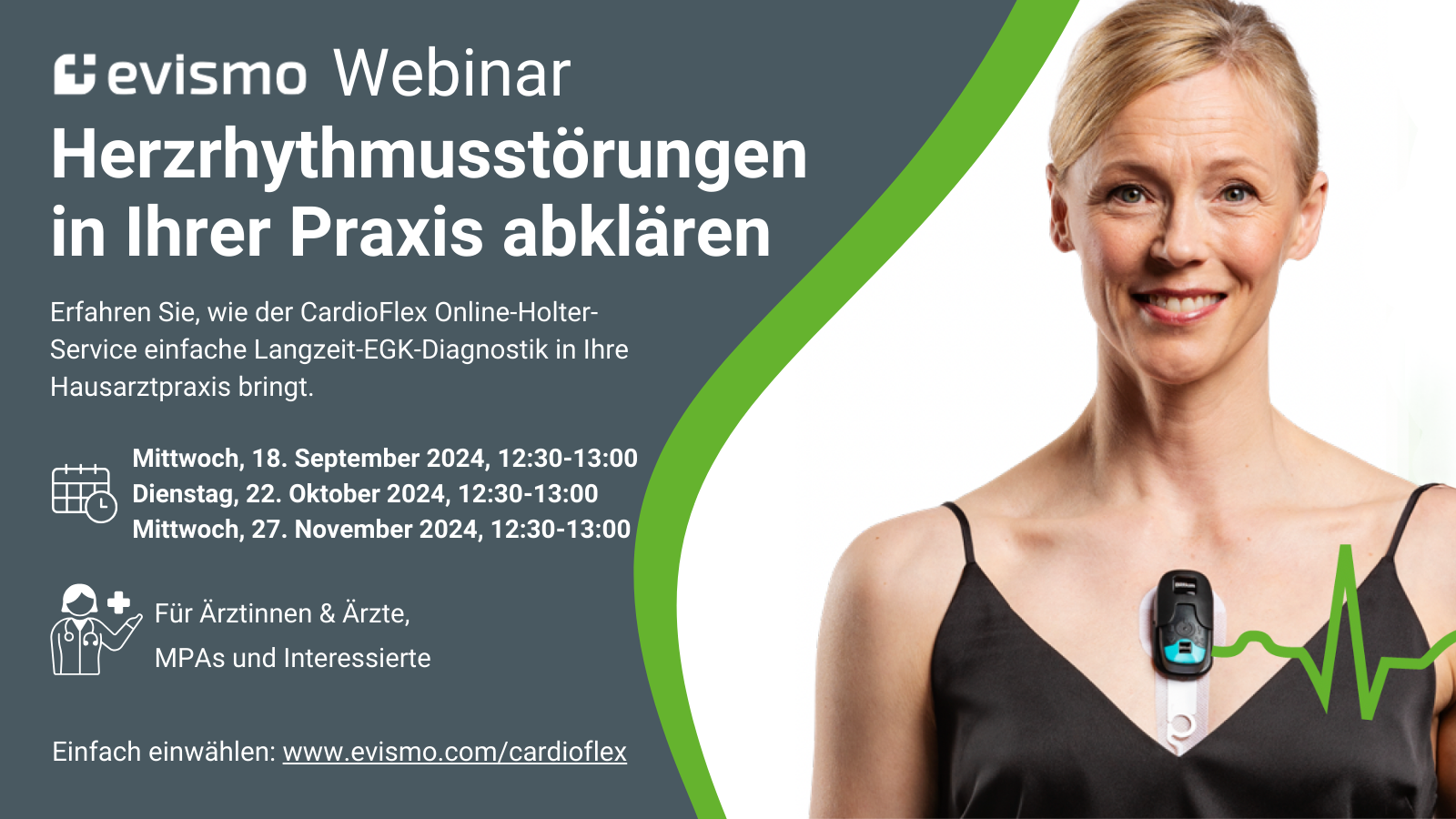Interview on the use of CardioFlex at the Gut Clinic in St. Moritz with Alissa Gmür, medical practice assistant

How long has Klinik Gut been using the CardioFlex long-term ECG service and how many kits are in use?
Alissa Gmür, medical practice assistant (MPA): We have been using CardioFlex since the beginning of this year.
What led to the decision to introduce CardioFlex at Klinik Gut?
AG: Our cardiologist and sports physician wanted to introduce CardioFlex at our clinic. Until then, we didn't have a long-term ECG in the Gut clinic. We had a long-term ECG in my previous practice, but the device was large and unwieldy. CardioFlex is much smaller and patients can shower with it. Our cardiologist analyses the ECG herself, which works extremely well with CardioFlex.
How many CardioFlex devices do you have in use?
AG: We have three to four devices in use at the same time.
How do you actually use CardioFlex with your patients? Can you describe a typical use case?
AG: First, the patient undergoes a resting ECG. The cardiologist then performs a cardiac ultrasound and, depending on the results, a long-term ECG is prescribed. The cardiac ultrasound helps the cardiologist to assess whether a long-term ECG can provide additional information. The patient then wears the long-term ECG for 3 to 7 days, depending on the onset of symptoms.
There were also times when a patient called and wanted to wear the device for an extra day because he had no symptoms yet. That was no problem with CardioFlex. He could simply wear the device for longer and promptly had an interruption the next day. It worked perfectly, I was able to extend it independently in the system.
Is the sensor applied directly at the appointment or does the patient have to be called in again?
AG: If necessary, the cardiologist calls me after the cardiac ultrasound so that we can prepare CardioFlex and apply and explain it to the patient immediately after the appointment.
Which wearing option do you mainly use (patch, 1, 2 or 3 leads) and why?
AG: Our experience shows that the patch led to more noise, which made the analyses less meaningful. That is why we now usually use three electrodes for 1-2 leads. This works excellently and does not bother patients, including athletes. The sensor is very small and hardly noticeable. What is particularly important for everyone is that they can shower with it.
How does the return process work?
AG: Patients can remove the device themselves and bring it back when they have time. In some cases, we also remove the devices for the patients. We usually arrange an appointment directly or send the diagnostic report to the referring GP for discussion.
How has the use of CardioFlex changed your work as an MPA compared to before?
AG: In the previous practice, the analyses were carried out by a cardiologist in Chur. We had to send the long-term ECG device to Chur and wait for the analysis, which led to delays of one to two weeks. Now the cardiologist can carry out the evaluation directly as soon as the measurement has been completed. We don't have to wait for the device as the data is already available online.
How does the process work with older people and the smartphone that hat comes with the CardioFlex long-term ECG?
AG: At first I had concerns about the phone, especially for older people. But so far it has always worked well. We even gave the smartphone to a 99-year-old and there were no problems. We put the sensor on him and explained that he just needed to hold the phone nearby and have it charged. That worked wonderfull.
How was your experience with evismo's training and support for using CardioFlex?
AG: This has always worked very well. Especially at the beginning, I didn't realise that I had to release the sensor after the measurement is finished so that it can be used for a new holter. However, the support team helped me immediately. That was the only problem I've had with CardioFlex so far.
Would you recommend CardioFlex to others?
AG: Yes, definitely. Especially because it's small and you can shower with it. That's very beneficial for the patients.
Thank you for taking the time to give us an insight into the use of CardioFlex.
Interested in CardioFlex for your practice?
Register for one of our lunchtime webinars, receive a brief introduction to CardioFlex and ask your questions directly.
Mittwoch, 18. September 2024, 12:30 - 13:00 Uhr
